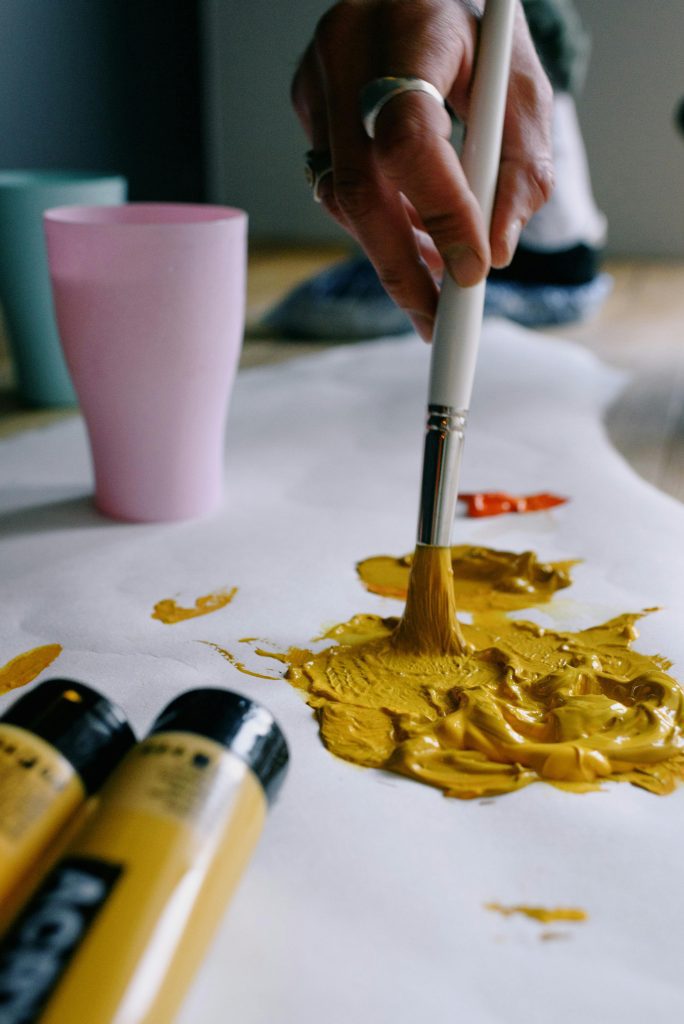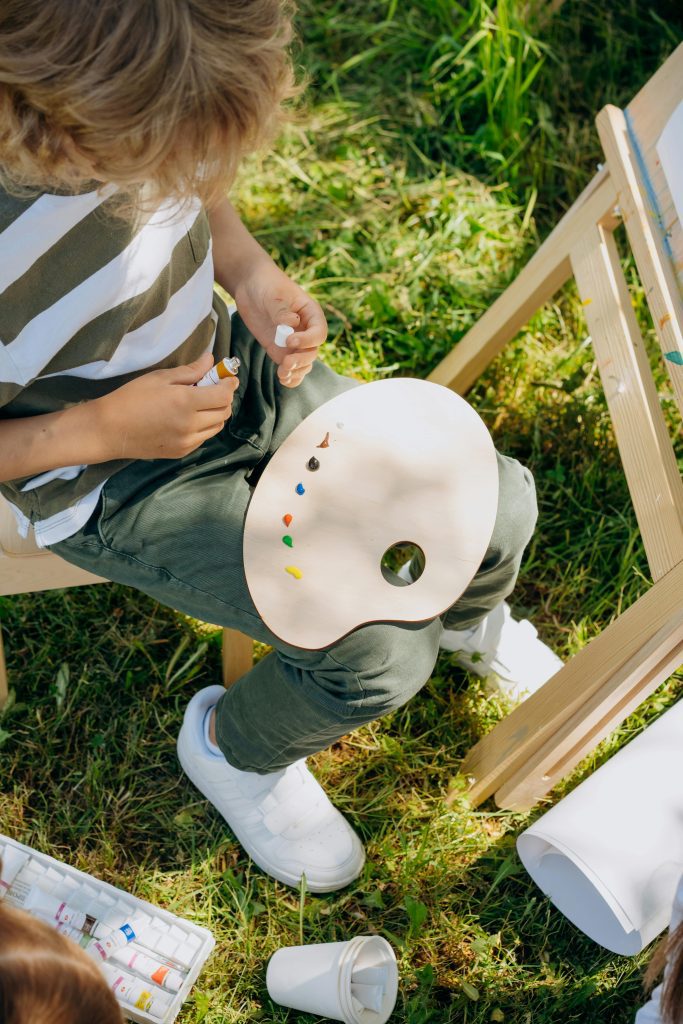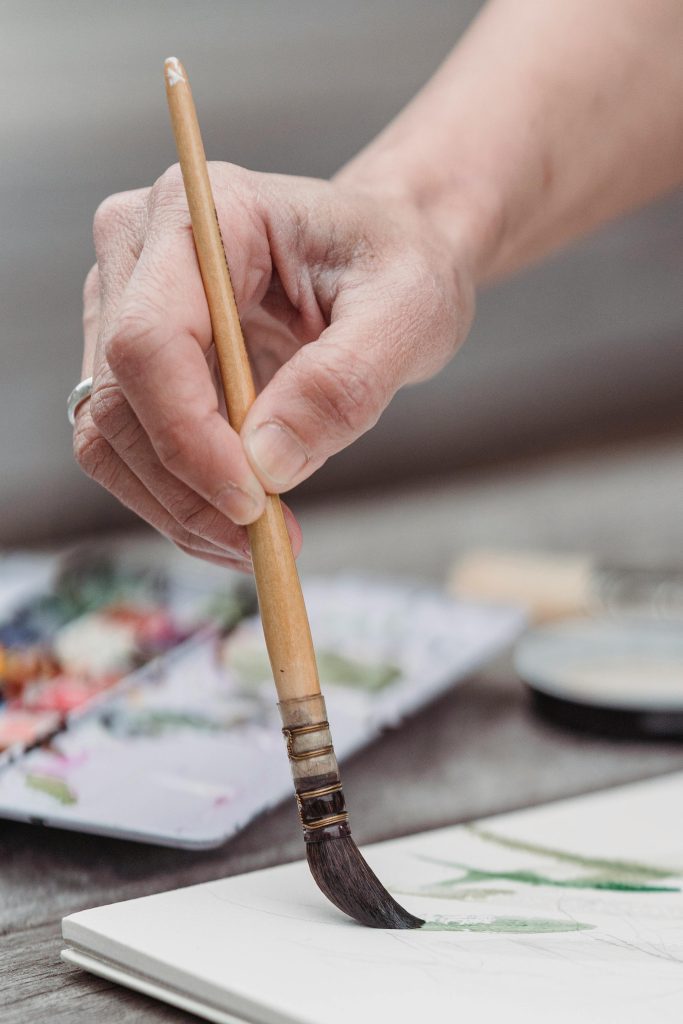Are You Losing Opportunities Because of Your Portfolio?

An online portfolio is not supposed to be a museum archive, it’s more like a living room that you keep redecorating. Too many artists treat their portfolios like a one-time project. They upload work once, check the box, and then let it gather digital dust. The problem with that is simple: people who find you online often assume what they see is the best and most recent version of your practice. If your latest piece is from three years ago, what does that say? It signals that you’re either inactive, not serious, or simply not evolving. None of those impressions help your career.
Think about your own browsing habits. If you land on a website and see outdated work, you don’t assume the person has more going on behind the scenes, you just leave. Collectors, curators, and even other artists are the same way. Your portfolio is their first handshake with you, and no one wants to feel like they’re shaking hands with a ghost. This is why thinking of your portfolio as a living, breathing space makes a big difference.
Another way to see it is through the lens of trust. An updated portfolio signals that you’re active, disciplined, and present in your field. That trust can be the difference between someone sending you an email to ask about your work, or clicking out and forgetting your name entirely.
Artists sometimes argue that their best work doesn’t change much, so why keep updating? But that misses the point. Updating isn’t about throwing out your strongest works. It’s about showing that you’re moving forward, refining, experimenting, and not stuck in time. Even small updates carry weight, because they show momentum.
The internet doesn’t pause. Algorithms, feeds, and search engines reward what’s fresh. The same principle applies to your portfolio. If it looks alive, it attracts attention. If it looks frozen, it repels it. And that’s really the first truth to accept: your portfolio is not a finished product. It’s an ongoing process.
Once you start to see your portfolio as something you tend to instead of something you finish, the idea of updating it becomes less of a chore and more of a natural part of being an artist in the digital era.
Understanding Who Looks at Your Portfolio and Why That Shapes Updates
To know how often you should update, you first need to understand who’s actually looking. A fellow artist might scroll casually and admire your aesthetics. A gallery owner, on the other hand, is scanning for consistency, growth, and readiness. A collector wants to see range but also maturity. Each audience reads “outdated” differently.
Imagine a curator preparing a show around contemporary photography. They land on your site and see that your latest upload is from 2021. They’ll likely move on, not because your work isn’t strong, but because they don’t want to chase someone who may no longer be in the game. Now, switch that scenario. Same curator, same work, but you’ve updated a new series just last month. Suddenly, you look like someone actively engaged in your practice. That alone makes you more attractive to approach.
Collectors are a slightly different case. They aren’t always looking for “latest work” but they do want reassurance that you’re relevant. If you haven’t updated in years, it makes them worry about whether your art will gain value or visibility. They’re buying a piece of your story as much as the object itself, and your portfolio tells a big part of that story.
Then there are jurors for open calls. Many specifically ask for a portfolio link. If yours looks abandoned, they may assume you don’t put effort into presentation. And if you think presentation doesn’t matter, ask yourself: would you apply to a job with a half-finished resume? Of course not. Your portfolio is that resume.
Friends, peers, and casual visitors also visit your portfolio. While they may not directly lead to sales or shows, they share links, recommend you, and boost visibility. Their impression matters too. A fresh portfolio signals that you’re worth talking about and sharing.
So when you ask how often to update, the answer partly depends on this: you’re not just updating for yourself, you’re updating for everyone who stumbles across your work. And all of them read “fresh” and “outdated” differently.
The Danger of Letting Old Work Linger Too Long
Keeping outdated or unrepresentative work online can quietly sabotage you. Artists often think that more is better, that showing everything paints a fuller picture. But portfolios aren’t scrapbooks. They’re curated introductions, and leaving up old or weaker work can actually hold you back.
Picture this: you made a series five years ago that felt groundbreaking at the time, but now, it doesn’t represent the technical or conceptual level you’ve reached. Leaving it up might feel nostalgic, but to an outside viewer, it just looks like your current ceiling. They don’t compare it to where you are now, they assume it is where you are now.
Another issue with old work is consistency. A portfolio with pieces scattered across wildly different styles and phases can feel unfocused. That doesn’t mean you shouldn’t show range, but there’s a difference between range and randomness. Outdated works often add randomness.
There’s also the risk of confusing your own message. If you’re positioning yourself as a painter working with abstraction, but your portfolio still has portraits from years ago, a curator might wonder which direction you’re actually committed to. That uncertainty can stop opportunities before they start.
Some artists hold onto old work because they’re afraid of losing visibility, like deleting it means deleting that chapter of their career. But a portfolio isn’t an archive, it’s a storefront. You don’t keep old displays in the window just because you once liked them. You keep what attracts people today.
This is why setting a rhythm for updates matters so much. It’s not only about adding the new, but also about pruning the old. Keeping the portfolio lean, focused, and current makes your artistic message clearer. And clarity is what makes people remember you.

How Seasonality Plays into Updating Your Portfolio
There’s no single calendar rule that fits every artist, but seasonality is a useful lens. Certain times of year tend to bring more open calls, exhibitions, and art fairs. Those windows are when curators, jurors, and collectors are especially active. Updating before those cycles gives you an edge.
For example, many open calls cluster in the early spring and fall. If your portfolio is polished and current at those times, you’re ready to apply without scrambling. Galleries also refresh their programming around those same seasons. An updated portfolio positions you well for those conversations.
Another seasonal factor is personal rhythm. Many artists naturally create in bursts. Maybe you work intensely in the summer and reflect in the winter. Recognizing your creative cycle can help you schedule portfolio updates in sync. That way, you’re not forcing updates when you don’t have new material, but you’re also not letting entire years slide by.
Think about school cycles too. Students graduate in spring, art programs have showcases, and residency deadlines often fall mid-year. If you’re aligning your updates with those flows, you ensure your portfolio is at its strongest when opportunities are most abundant.
Seasonality also matters for collectors. The art market has peaks, often aligning with big fairs or cultural events. Having a fresh update in those months increases your chances of getting noticed by someone browsing widely.
In short, tying updates loosely to seasonal rhythms makes the process less arbitrary. Instead of asking “when should I update,” you’ll already know: before the big cycles when the most eyes are looking.
Small Tweaks vs. Big Overhauls: Knowing the Difference
Not every update needs to be a dramatic overhaul. In fact, constant small tweaks often carry more weight than occasional big revamps. Think of it like keeping a house tidy. You don’t need to renovate the kitchen every month, but you do need to vacuum the floors and wash the dishes.
Small tweaks could include replacing one photo with a stronger version, updating captions, or adjusting your artist statement to reflect your current thinking. These micro-adjustments show activity without overwhelming you.
Big overhauls, on the other hand, come into play when your work takes a major turn. Maybe you’ve shifted from painting to installation, or your subject matter has changed dramatically. In that case, a larger portfolio refresh helps align the new direction with how you present yourself.
The danger comes when artists avoid small tweaks for too long, then suddenly realize everything looks outdated. That’s when the portfolio feels like a burden instead of a tool. Regular small updates prevent that “renovation panic.”
One trick is to think of your portfolio like a garden. You don’t replant the entire thing every time. You weed, prune, and occasionally add new plants. Over time, the garden grows naturally but still feels tended. Your portfolio benefits from the same rhythm.
So when you’re asking yourself how often to update, remember: it doesn’t always mean uploading an entire new series. Sometimes it just means swapping one piece, polishing a sentence, or pruning an old photo. Those small moves, repeated consistently, make a big impact.
The Psychology of Freshness: Why Updated Portfolios Build Trust
There’s a subtle but powerful psychological effect when people see an updated portfolio. It signals reliability. It says, “I’m still here, I’m still creating, and you can count on me.” That impression matters more than most artists realize.
For galleries, it suggests that if they invest in you, they’re investing in someone consistent. For collectors, it suggests that your career has momentum, which in turn affects how they value your work. For peers, it suggests that you’re committed, which can lead to collaborations.
The opposite is also true. An outdated portfolio signals risk. People wonder if you’ve lost interest or stopped making work. They worry about whether they can depend on you to follow through on opportunities. Even if you’re still making art every day, if your portfolio doesn’t show it, the impression is the same: silence.
The psychology of freshness also connects to attention spans. Online, people are trained to look for “what’s new.” Fresh updates play into that instinct. Outdated sites repel attention because they feel like yesterday’s news.
It’s worth remembering that updates don’t just reassure others, they also motivate you. When you take the time to refresh your portfolio, you’re reminded of your own progress. It creates a feedback loop where seeing your growth fuels more growth.
So while the question of “how often” feels logistical, the answer is also emotional. Updating regularly doesn’t just make you look current, it makes you feel current. And that confidence can show up in every email, application, and conversation you have.
Why Timing Can Be More Important Than Frequency
When it comes to updating your portfolio, timing can sometimes matter more than sticking to a rigid schedule. For example, let’s say you just finished a series you are proud of and it feels like a leap forward in your skill level. Adding it right away helps you capture momentum and shows visitors the fresh energy you’re working with. On the other hand, if you upload a piece you don’t feel fully confident in just because your calendar reminder told you to update, it can dilute the impact of the rest of your work. This balance between timing and frequency can make a big difference.
Think of your portfolio like a garden. You don’t water plants by the clock, you water them when they need it. Similarly, your portfolio doesn’t always need updates at strict intervals, but when something new grows in your practice, that’s when it’s time to nurture it online. People who look at your work can feel when something is rushed versus when it’s ready.
It’s also worth thinking about outside timing, such as before a big open call or a local art fair. If you know curators or collectors might be checking you out, making sure your portfolio reflects your best recent work can set you up for stronger opportunities. The goal isn’t to overwhelm yourself with constant tinkering but to catch the moments when your art story has shifted.
This approach also gives you permission to not stress about weeks when nothing feels new. Sometimes, your practice is in a behind-the-scenes phase, and that’s okay. Instead of worrying that your portfolio is “stale,” remember that the real updates happen when your art evolves. Viewers don’t need constant change; they need meaningful, authentic updates.
When you think in terms of timing, your updates become more intentional. Each addition feels like a chapter that belongs, rather than a forced page in the book. Over time, this rhythm helps your portfolio feel alive without looking chaotic.
So, instead of asking, “How often should I update?” you might reframe the question to: “When does my work feel ready to be seen?” That subtle shift can help you decide more confidently.

Signs That Your Portfolio Is Due for a Refresh
There are little signals that whisper when it’s time for a refresh, and once you start noticing them, updating feels less like a chore and more like a natural step. One big sign is when your portfolio feels like it doesn’t match how you talk about your art anymore. If you’ve grown in a new direction but your site still reflects an older stage, that mismatch can confuse people.
Another sign is when you’re hesitant to share your portfolio link. If you catch yourself thinking, “I hope they don’t click on that project” or “this doesn’t really show my best side,” that’s a clear signal something needs adjusting. A good portfolio should make you feel proud, not cautious.
You might also notice that certain works feel repetitive. If you have five pieces that all show the same idea, your portfolio could benefit from a trim. Curators and collectors like variety because it shows your range. Swapping one or two out for something that highlights another side of your practice can make the whole collection stronger.
Even external cues can tell you it’s time. If someone keeps asking to see work you haven’t uploaded yet, or a gallery mentions they’d like to view something current, that’s your chance to act. Your audience is basically telling you what they want.
And sometimes, the best signal is simply your own gut. If a new piece feels like a turning point or your style has shifted, trust that instinct. Updating your portfolio is about aligning the image you put into the world with the artist you are right now.
So, instead of stressing over a fixed schedule, pay attention to these cues. They’ll often guide you more accurately than a calendar reminder ever could.
The Risk of Over-Updating and How to Avoid It
Believe it or not, updating too often can actually work against you. Imagine visiting a favorite café where the menu changes every week. While it’s exciting at first, eventually you stop trusting what will be there. The same applies to your portfolio. If someone revisits and finds a completely different body of work every time, they might struggle to understand your artistic direction.
Over-updating can also spread you thin. If you’re constantly tweaking, you might not give your new works time to breathe and gather responses. Sometimes, pieces need to sit and live for a while before you decide if they truly represent you. Uploading them immediately can lead to a “trial-and-error” portfolio that feels scattered.
Another risk is that you start chasing trends. When you’re too focused on always having something new, it’s tempting to push out work that feels timely but not true to you. A portfolio should showcase your vision, not act like a social media feed where constant updates are expected.
There’s also the risk of confusing jurors, curators, or collectors who might be evaluating your work over a span of time. If your submissions and portfolio shift drastically in a few weeks, they may question consistency. Stability matters as much as freshness.
To avoid over-updating, give yourself a “cooling-off” period. For example, wait a month after finishing a new piece before adding it. If it still feels right after that, it probably belongs in your portfolio. This simple buffer helps you filter impulsive uploads.
Remember, the goal isn’t to show every single thing you create. It’s to create a curated space where people can clearly see your story. That clarity can get lost if you treat your portfolio like a revolving door.
Practical Routines That Keep You Consistent
Consistency doesn’t mean daily updates, but having some routines can make the process smoother. One simple habit is to set aside a “portfolio check-in” every three or four months. Treat it like a health check-up where you review what still feels strong, what might need replacing, and what new work could fit.
During these check-ins, don’t just look at individual pieces. Step back and ask yourself: does this collection tell the story I want right now? Sometimes, the problem isn’t that a work is weak, but that it no longer fits the overall arc. Thinking in terms of the bigger picture helps you stay intentional.
Another helpful routine is to keep a “holding folder” on your computer or cloud storage. Any new work you finish goes here first, with notes about why it might fit in your portfolio. Later, during a check-in, you can review these pieces more calmly instead of rushing to upload them the moment they’re done.
If you collaborate with others, you might also use these routines to update supporting materials like your artist statement or CV. Portfolios are not just about images, they’re about context too. Keeping everything aligned in one session makes sure nothing feels outdated.
Some artists also find it useful to track their updates. A simple spreadsheet with dates, added works, and removed works gives you a clear history. Over time, this record helps you spot patterns in your artistic growth and portfolio choices.
The point of routines is not to box you in, but to give you a rhythm. When updating becomes part of your practice instead of a random stressor, it feels less overwhelming and more natural.
Tips and Hacks for Making Updates Easier
Updating your portfolio doesn’t have to feel like a mountain. A few practical hacks can make it almost effortless. One trick is to write short notes about each piece when you finish it. Include the story behind it, the medium, and why it matters to you. Later, when you’re uploading, you’ll have ready-made text instead of scrambling to remember.
Another hack is to photograph your work in batches. Instead of setting up your lighting and camera every time you complete a piece, save up a few and capture them all in one session. It’s more efficient, and it keeps the style of your documentation consistent.
Templates can also be a lifesaver. If you’re using a website builder, create a layout once and simply swap in new works without rethinking design each time. This keeps your portfolio looking cohesive and reduces the mental load.
You can also create a “maybe list” of works. These are pieces you’re unsure about but don’t want to forget. Instead of debating endlessly in the moment, keep them on this list and revisit during your next portfolio review. Often, time makes the decision clearer.
For those who get stuck in perfectionism, set a deadline for updates. For example, decide you’ll upload three new works by the end of the month, no matter what. This pushes you past overthinking and into action.
Small hacks like these might seem trivial, but they remove friction. The easier updating feels, the more likely you’ll keep your portfolio alive without it becoming a dreaded task.
Keeping Your Portfolio Alive Without Pressure
At the end of the day, your portfolio isn’t a museum, it’s more like a conversation. It changes as you change. The idea isn’t to update for the sake of updating, but to let your online presence reflect your real growth as an artist. That reflection doesn’t happen on a rigid schedule, it happens in rhythm with your practice.
By paying attention to timing, signals, and your own instincts, you’ll know when it’s time for a refresh. And by avoiding the trap of over-updating, you’ll keep your story clear without burning yourself out.
Practical routines and simple hacks can make the whole process lighter, almost second nature. Instead of dreading portfolio work, you’ll see it as part of your creative flow. Each update becomes a chance to celebrate progress rather than a chore.
And remember, your portfolio is not just for others, it’s also for you. It’s a mirror of your journey. Looking back at older updates often reminds you of how far you’ve come, and that can be just as motivating as impressing a curator.
